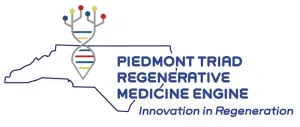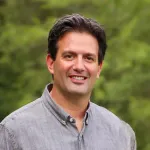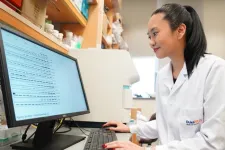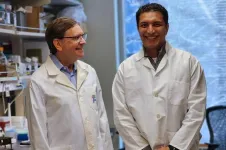(Press-News.org) Traveling to and from a clinic or a laboratory for treatment can be difficult and expensive for older Americans. To address this, scientists developed and tested a new training and supervision program for older adults so they can receive Transcranial Electrical Stimulation (tES), a promising intervention for various clinical conditions, in their homes.
Published in Neuromodulation: Technology at the Neural Interface, this groundbreaking training and supervision program was designed to introduce and teach caregivers, family members, and patients how to administer home-based transcranial electrical stimulation (HB-tES), equipping them with the skills necessary to do so safely and effectively. The program's feasibility and effectiveness are backed by data from its implementation in over 350 sessions across two pilot clinical trials specifically targeting older adults.
The study, “An educational program for remote training and supervision of home-based transcranial electrical stimulation: feasibility and preliminary effectiveness,” assesses the feasibility and educational effectiveness of the program, aligned with International Federation of Clinical Neurophysiology guidelines, through sessions led by trained lay older adults. The researchers used insights from numerous clinical studies involving tES interventions to develop both the general framework of the HB-tES training and monitoring program and the specific content of the instructional resources.
The training and supervision program discussed in the study provides a comprehensive curriculum with instructional materials, a set of remote hands-on practices, a standardized framework for ongoing remote supervision and monitoring, and on-demand assistance.
The study found that all participants successfully completed the training. Participants reported high satisfaction levels with the program and confidence in their ability to administer HB-tES. Technical assistance from teaching staff was rarely needed across over 350 sessions, with an impressive adherence rate exceeding 98% and no adverse events.
The findings indicate that the HB-tES training program is both effective and well-received by participants.
“The HB-tES approach ensures that everyone can access tES, regardless of ability to travel, immunocompromised status, or risk of falling. Our remote program was developed to offer equal tES treatment opportunities to all. Also, including a broader and more diverse group of people in studies strengthens the robustness and generalizability of our findings, enabling us to gather stronger evidence on tES effectiveness across various health conditions. The design of our program allows for easy adaptation to various HB-tES research applications and devices, and is accessible online, making it a versatile tool for the scientific community. By promoting uniformity in study methods, the adoption of this program is poised to significantly advance the field of tES research.” said Dr. Davide Balos Cappon, MS, PhD, an assistant professor of neurology at Harvard Medical School, neuropsychologist at the Deanna and Sidney Wolk Center for Memory Health, and assistant scientist at the Hinda and Arthur Marcus Institute for Aging Research at Hebrew SeniorLife.
“We hope that the remote nature of this training program will facilitate increased accessibility to HB-tES clinical trials among underrepresented racial and ethnic populations across diverse demographics and locations. This program is designed for easy adaptation to different HB-tES research applications and devices. The adoption of this program is expected to facilitate uniformity of study methods in future HB-tES studies and thereby accelerate the pace of tES intervention discovery,” Dr. Cappon added.
The remote training program will boost HB-tES research accessibility, enabling diverse demographics and locations to adopt standardized methods and speeding up tES intervention discoveries.
Davide Cappon was partially supported by the Brain and Behavior Research Foundation (30772) and an NIH grant (R01 AG076708).
Co-authors include:
Davide Balos Cappon, Hinda and Arthur Marcus Institute for Aging Research, Hebrew SeniorLife
Tim den Boer, BSc, research associate, Hinda and Arthur Marcus Institute for Aging Research, Hebrew SeniorLife
Wanting Yu, study coordinator II, Hinda and Arthur Marcus Institute for Aging Research, Hebrew SeniorLife
Nicole LaGanke, BSc, project director I, Hinda and Arthur Marcus Institute for Aging Research, Hebrew SeniorLife
Rachel Fox, BSc, research assistant II, Hinda and Arthur Marcus Institute for Aging Research, Hebrew SeniorLife
Marina Brozgol, MA, clinical research coordinator, Center for the Study of Movement, Cognition, and Mobility, Neurological Institute, Tel Aviv, Israel
Jeffrey M. Hausdorff, PhD, professor, Center for the Study of Movement, Cognition, and Mobility, Neurological Institute, Tel Aviv
Brad Manor, PhD, associate scientist, Hinda and Arthur Marcus Institute for Aging Research, Hebrew SeniorLife
Alvaro Pascual-Leone, MD, PhD, senior scientist, Hinda and Arthur Marcus Institute for Aging Research, Hebrew SeniorLife and medical director, Deanna & Sidney Wolk Center for Memory Health, Hebrew SeniorLife
About Hebrew SeniorLife
Hebrew SeniorLife, an affiliate of Harvard Medical School, is a national senior services leader uniquely dedicated to rethinking, researching, and redefining the possibilities of aging. Hebrew SeniorLife cares for more than 4,500 seniors a day across seven campuses throughout Greater Boston. Locations include: Hebrew Rehabilitation Center-Boston and Hebrew Rehabilitation Center-NewBridge in Dedham; NewBridge on the Charles, Dedham; Orchard Cove, Canton; Simon C. Fireman Community, Randolph; Center Communities of Brookline, Brookline; Jack Satter House, Revere; and Leyland Community, Dorchester. Founded in 1903, Hebrew SeniorLife also conducts influential research into aging at the Hinda and Arthur Marcus Institute for Aging Research, which has a portfolio of more than $98 million, making it one of the largest gerontological research facilities in the U.S. in a clinical setting. It also trains more than 500 geriatric care providers each year. For more information about Hebrew SeniorLife, visit our website or follow us on our blog, Facebook, Instagram, Threads, and LinkedIn.
About the Hinda and Arthur Marcus Institute for Aging Research
Scientists at the Marcus Institute seek to transform the human experience of aging by conducting research that will ensure a life of health, dignity, and productivity into advanced age. The Marcus Institute carries out rigorous studies that discover the mechanisms of age-related disease and disability; lead to the prevention, treatment, and cure of disease; advance the standard of care for older people; and inform public decision-making.
END
New training program facilitates home-based transcranial electrical stimulation
Home-based treatment can be easier and more accessible for older adults
2024-07-17
ELSE PRESS RELEASES FROM THIS DATE:
Study finds persistent proteins may influence metabolomics results
2024-07-17
GRAND RAPIDS, Mich. (July 17, 2024) — Van Andel Institute scientists have identified more than 1,000 previously undetected proteins in common metabolite samples, which persist despite extraction methods designed to weed them out.
The findings, published in Nature Communications, give scientists new insights and tools for improving future metabolomics experiments, including a novel protocol for removing these proteins during the extraction process. The study does not invalidate prior results but instead reinforces the importance ...
Living in greener neighborhoods during midlife can slow cognitive decline
2024-07-17
A new study found that increased exposure to residential greenery may help stave off cognitive decline by an annual rate of eight months. This delay was observed more among people living in low-socioeconomic status and highly populated neighborhoods, as well as people who carry the APOE-ɛ4 gene, which is associated with an increased risk of Alzheimer’s disease.
Research has shown that about 40 percent of dementia could be prevented or delayed worldwide by addressing modifiable risk factors associated with the condition, particularly during midlife.
A new study led by a Boston University School of Public Health (BUSPH) ...
Research tracks 66 million years of mammalian diversity
2024-07-17
When trying to understand the present, it's helpful to look to history. New research from the University of Nebraska–Lincoln examined the fossil record going back 66 million years and tracked changes to mammalian ecosystems and species diversity on the North American continent.
The study, led by Alex Shupinski, who earned her doctorate in May, and co-authored by Kate Lyons, associate professor in the School of Biological Sciences, provides a large-scale view of how species diversity changed over the first 65 million years of the Cenozoic era — up until the arrival of humans — ...
RegeneratOR Test Bed welcomes Cytoink to accelerate biomedical innovations
2024-07-17
Winston-Salem, North Carolina — July 17, 2024 — The RegeneratOR Test Bed, located in Innovation Quarter, announces the inclusion of Cytoink into its pioneering ecosystem dedicated to advancing biomedical research and development. Cytoink brings cutting-edge biomaterials manufacturing, with over 100 custom formulations, and bioprinting expertise that merges biofunctionality with high-throughput production. Cytoink specializes in the biofabrication of in vitro 3D tissue phantoms, extrusion-based and light-based (DLP/VAM) bioinks, and integrated perfusion microfluidics bioreactors. Additionally, Cytoink provides bespoke biomaterial solutions ...
Jeffrey Spraggins named director of Vanderbilt University Mass Spectrometry Research Center
2024-07-17
Jeffrey Spraggins, associate professor of cell and developmental biology, biochemistry, and chemistry, has been named director of the Mass Spectrometry Research Center. He succeeds Richard Caprioli, Stanford Moore Chair in Biochemistry, who established the MSRC in 1998 and who is retiring this summer.
Spraggins is a leading scientist in spatial biology and imaging mass spectrometry—an untargeted molecular imaging approach that enables molecular mapping at cellular resolution—a technology originated by Caprioli. Spraggins’ research lies at the intersection of technology development, data science, and biomedical research. His research group ...
Duke-NUS finding advances quest to slow ageing
2024-07-17
An ageing population will bring colossal health, social, and economic challenges over the coming decades[1]. As people live longer, staving off the physical decline and frailty that come with age has become a holy grail, with effective interventions projected to unlock significant societal and economic benefits. Estimates suggest that a slowdown in ageing that increases life expectancy by one year alone is worth US$38 trillion.[2]
In a discovery published in Nature, a team of scientists from Duke-NUS Medical School in Singapore may have found a key to slow ageing.
The ...
Logged forests can still have ecological value – if not pushed too far
2024-07-17
Researchers have analysed data from 127 studies to reveal ‘thresholds’ for when logged rainforests lose the ability to sustain themselves.
The results could widen the scope of which forests are considered ‘worth’ conserving, but also show how much logging degrades forests beyond the point of no return.
The first-of-its-kind study, led by researchers from the Department of Life Sciences at Imperial College London with collaborators from around the world, is published today in ...
Exoplanet caught in ‘hairpin turn’ signals how high-mass gas giants form
2024-07-17
UNIVERSITY PARK, Pa. — Astronomers have discovered a planet that has the most oblong orbit ever found among transiting planets. The exoplanet’s extreme circuit — which looks closer to a cucumber than a circle — follows one of the most drastically stretched-out orbits of all known exoplanets, planets that orbit stars outside our solar system. It is also orbiting its star backwards, lending insight into the mystery of how close-in massive gas planets, known as hot Jupiters, form, stabilize and evolve over time.
The research, led by Penn State scientists, was published today (July 17) in ...
Switching off inflammatory protein leads to longer, healthier lifespans in mice
2024-07-17
Scientists at the Medical Research Council Laboratory of Medical Science and Imperial College London have discovered that ‘switching off’ a protein called IL-11 can significantly increase the healthy lifespan of mice by almost 25%.
The scientists, working with colleagues at Duke-NUS Medical School in Singapore, tested the effects of IL-11 by creating mice that had the gene producing IL-11 (interleukin 11) deleted. This extended the lives of the mice by over 20% on average.
They also treated 75-week-old mice – equivalent to the age of about 55 years in humans – with an ...
New gene therapy for muscular dystrophy offers hope
2024-07-17
A new gene therapy treatment for Duchenne muscular dystrophy shows promise of not only arresting the decline of the muscles of those affected by this inherited genetic disease, but perhaps, in the future, repairing those muscles.
The UW Medicine-led research focuses on delivering a series of protein packets inside shuttle vectors to replace the defective DMD gene within the muscles. The added genetic code will then start producing dystrophin, the protein lacking in patients with muscular dystrophy.
Currently, there is no cure for the disease ...
LAST 30 PRESS RELEASES:
Making lighter work of calculating fluid and heat flow
Normalizing blood sugar can halve heart attack risk
Lowering blood sugar cuts heart attack risk in people with prediabetes
Study links genetic variants to risk of blinding eye disease in premature infants
Non-opioid ‘pain sponge’ therapy halts cartilage degeneration and relieves chronic pain
AI can pick up cultural values by mimicking how kids learn
China’s ecological redlines offer fast track to 30 x 30 global conservation goal
Invisible indoor threats: emerging household contaminants and their growing risks to human health
Adding antibody treatment to chemo boosts outcomes for children with rare cancer
Germline pathogenic variants among women without a history of breast cancer
Tanning beds triple melanoma risk, potentially causing broad DNA damage
Unique bond identified as key to viral infection speed
Indoor tanning makes youthful skin much older on a genetic level
Mouse model sheds new light on the causes and potential solutions to human GI problems linked to muscular dystrophy
The Journal of Nuclear Medicine ahead-of-print tip sheet: December 12, 2025
Smarter tools for peering into the microscopic world
Applications open for funding to conduct research in the Kinsey Institute archives
Global measure underestimates the severity of food insecurity
Child survivors of critical illness are missing out on timely follow up care
Risk-based vs annual breast cancer screening / the WISDOM randomized clinical trial
University of Toronto launches Electric Vehicle Innovation Ontario to accelerate advanced EV technologies and build Canada’s innovation advantage
Early relapse predicts poor outcomes in aggressive blood cancer
American College of Lifestyle Medicine applauds two CMS models aligned with lifestyle medicine practice and reimbursement
Clinical trial finds cannabis use not a barrier to quitting nicotine vaping
Supplemental nutrition assistance program policies and food insecurity
Switching immune cells to “night mode” could limit damage after a heart attack, study suggests
URI-based Global RIghts Project report spotlights continued troubling trends in worldwide inhumane treatment
Neutrophils are less aggressive at night, explaining why nighttime heart attacks cause less damage than daytime events
Menopausal hormone therapy may not pose breast cancer risk for women with BRCA mutations
Mobile health tool may improve quality of life for adolescent and young adult breast cancer survivors
[Press-News.org] New training program facilitates home-based transcranial electrical stimulationHome-based treatment can be easier and more accessible for older adults







